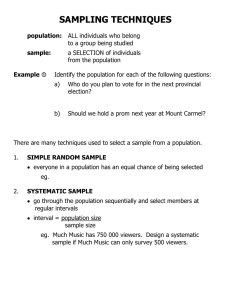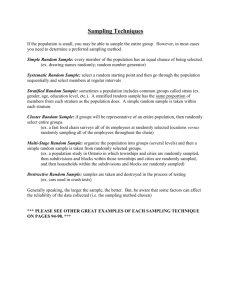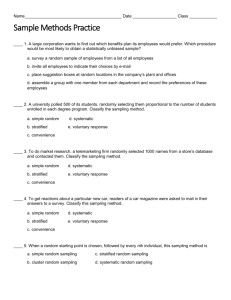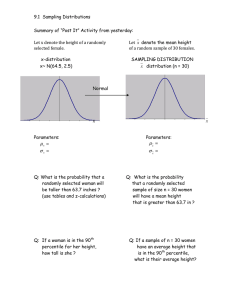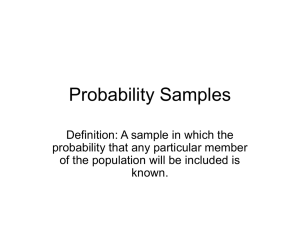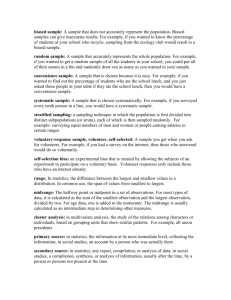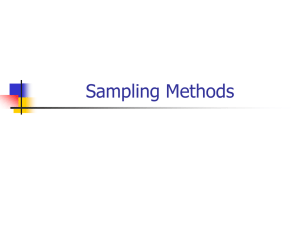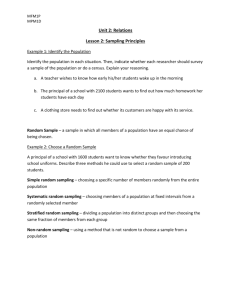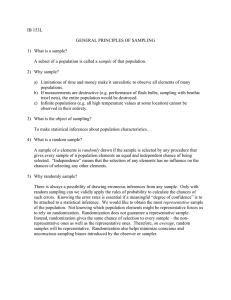sampling-techniques
advertisement
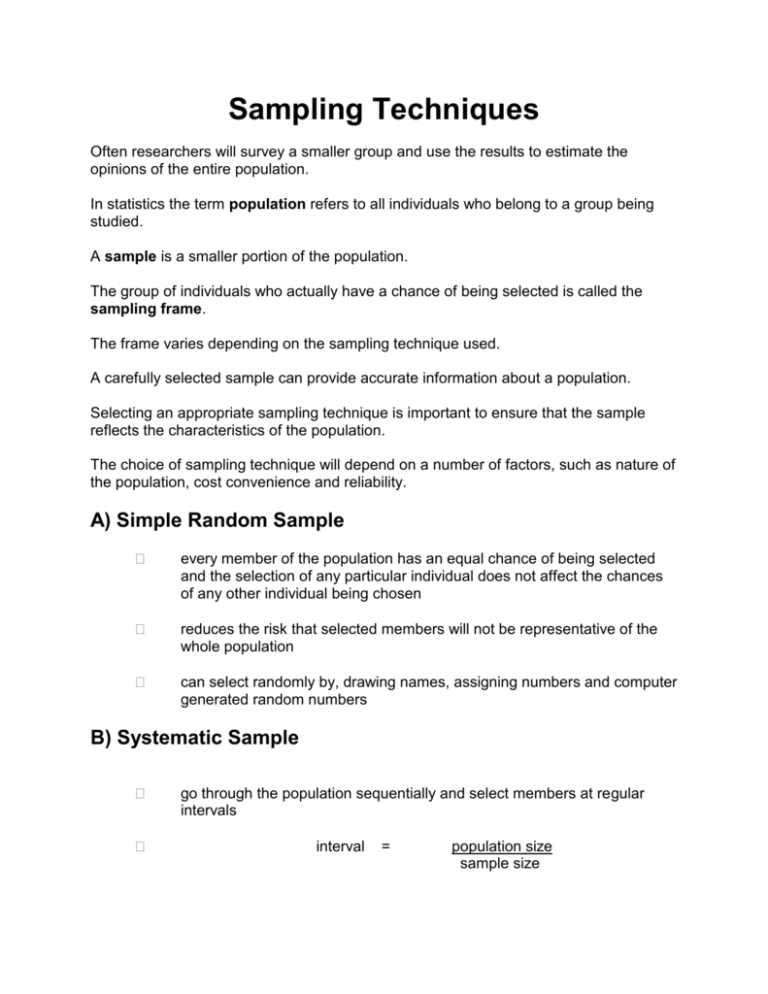
Sampling Techniques Often researchers will survey a smaller group and use the results to estimate the opinions of the entire population. In statistics the term population refers to all individuals who belong to a group being studied. A sample is a smaller portion of the population. The group of individuals who actually have a chance of being selected is called the sampling frame. The frame varies depending on the sampling technique used. A carefully selected sample can provide accurate information about a population. Selecting an appropriate sampling technique is important to ensure that the sample reflects the characteristics of the population. The choice of sampling technique will depend on a number of factors, such as nature of the population, cost convenience and reliability. A) Simple Random Sample every member of the population has an equal chance of being selected and the selection of any particular individual does not affect the chances of any other individual being chosen reduces the risk that selected members will not be representative of the whole population can select randomly by, drawing names, assigning numbers and computer generated random numbers B) Systematic Sample go through the population sequentially and select members at regular intervals interval = population size sample size C) Stratified Sample groups of members who share common characteristics, such as gender, age, or education level are called strata. a stratified sample has the same proportion of members from each stratum as the population does. D) Cluster Sample if certain groups are likely to be representative of the entire population, you can use a random selection of such groups i.e. Randomly poll all grade eleven classes from selected schools as opposed to randomly selecting students from all schools E) Multi-Stage Sample uses several levels of random sampling Example: Survey Ontario High Schools select cities/towns select high schools select sample F) Voluntary-Response Sample researcher simply invites any member of the population to participate in the survey however, results can be skewed because people who choose to respond are often not representative of the population G) Convenience Sample Follow Up: selected because it is easily accessible page 117 # 1-9



